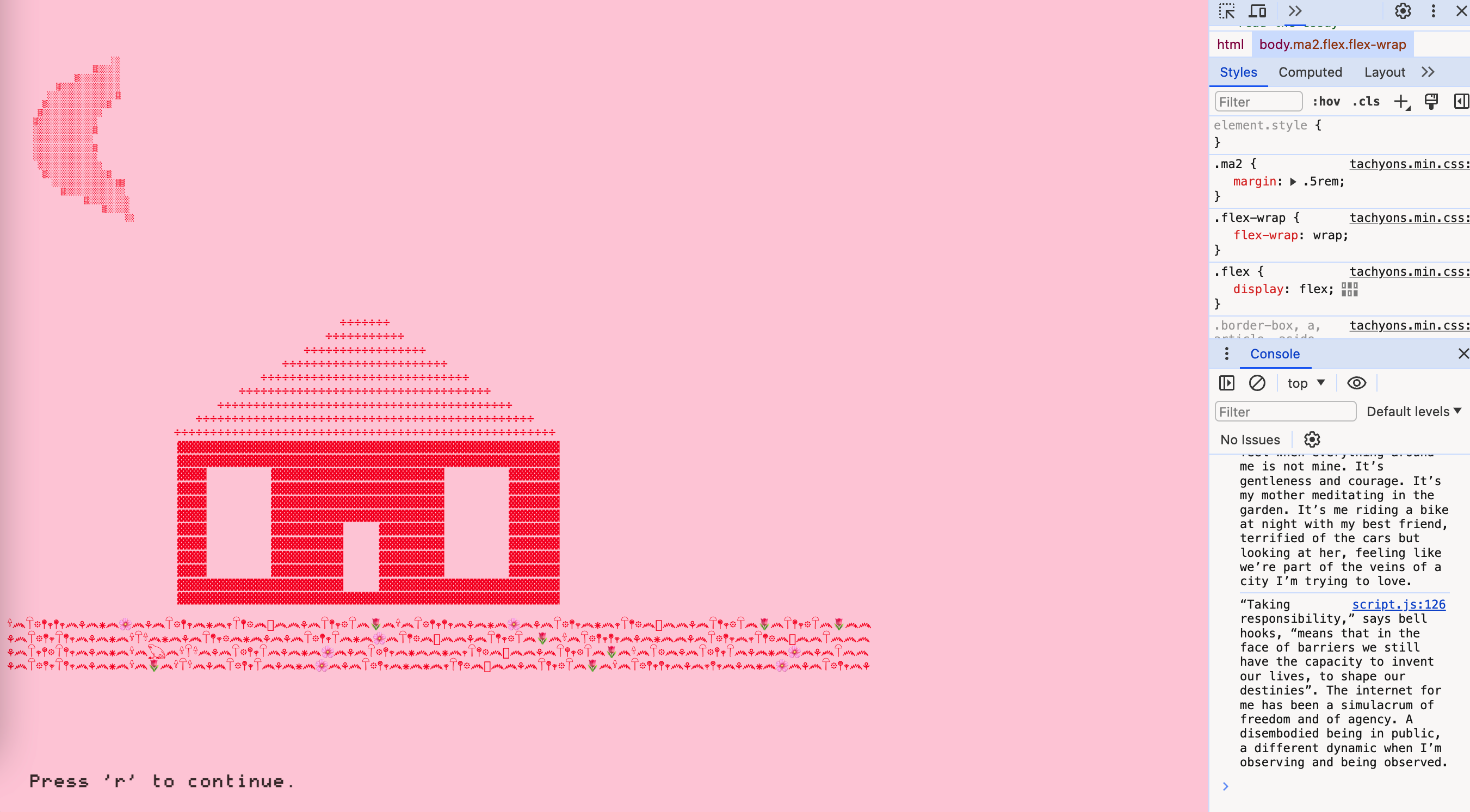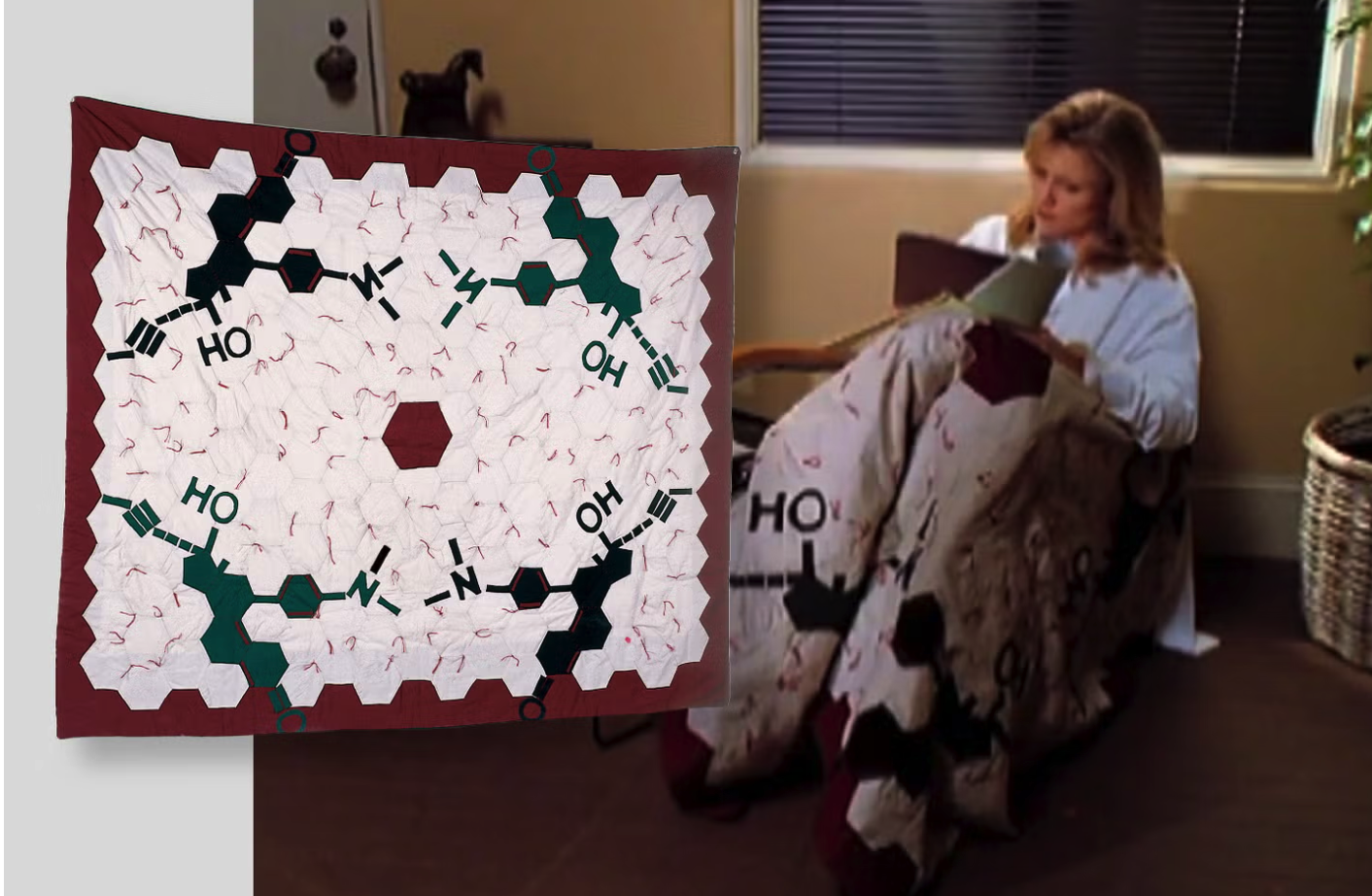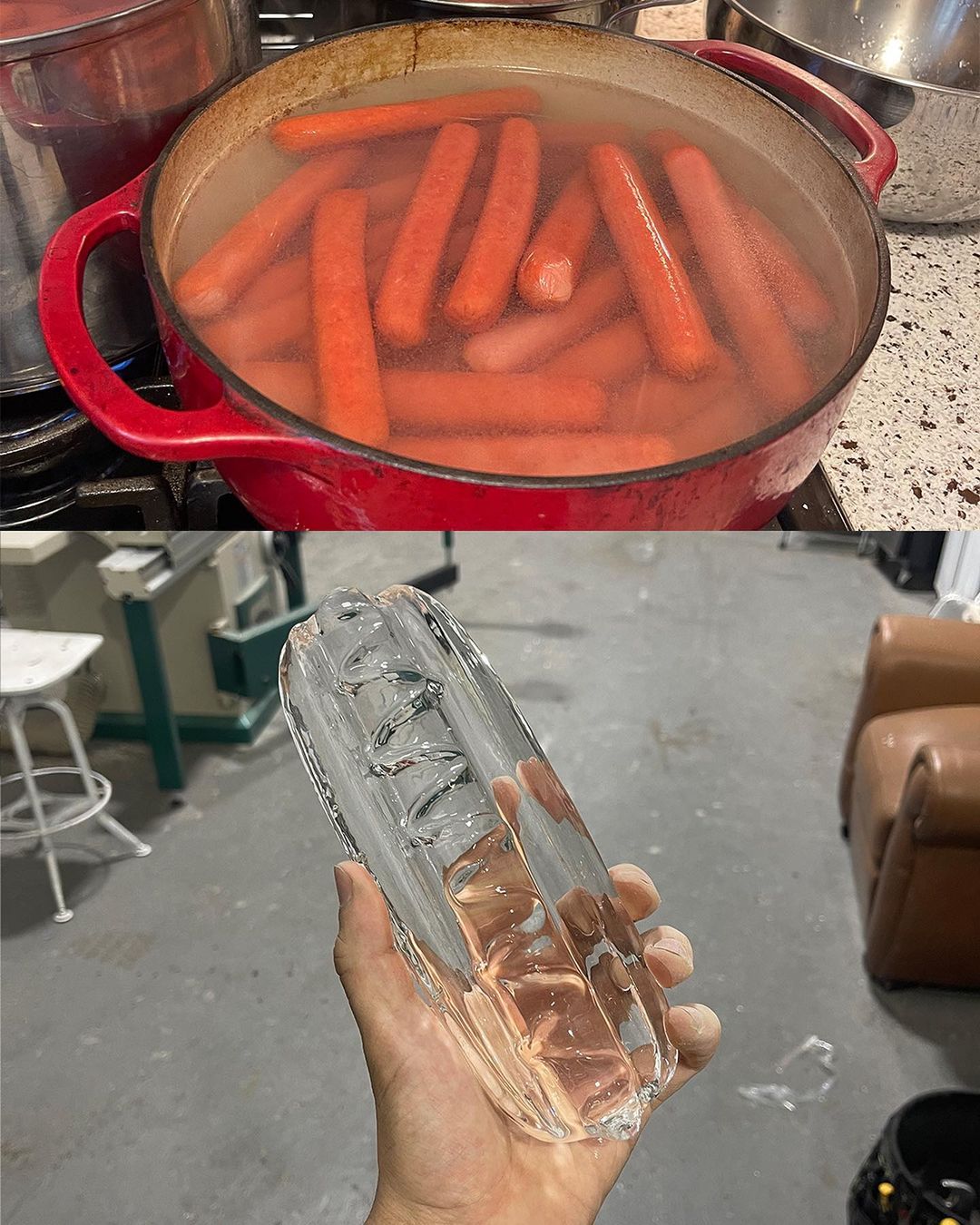Video and music by Eryk Salvaggio, inspired by a Reddit post.
I’ve got 20,000 jpgs and no plans
I’ve 30,000 jpgs and no ideas
for what to do with them
I’ve got 40,000 jpgs on a hard drive
what do you guys do with all these pictures
Video and music by Eryk Salvaggio, inspired by a Reddit post.
I’ve got 20,000 jpgs and no plans
I’ve 30,000 jpgs and no ideas
for what to do with them
I’ve got 40,000 jpgs on a hard drive
what do you guys do with all these pictures

The Grannies is a documentary short film created with/in Red Dead Redemption 2. A group of players — Marigold Bartlett, Andrew Brophy, Ian MacLarty, Kalonica Quigley & friends aka The Grannies — venture beyond the boundaries of the video game. Peeking behind the curtain of the game’s virtual world they discover a captivating and ethereal space that reveals the humanity and materiality of digital creations. Directed by Marie Foulston and edited by Luke Neher, the film was produced by Marie Foulston and Nick Murray.
[related reading: Ursula K. Le Guin, The Space Crone, 1976]

A webpage with one million checkboxes. Checking a box checks it for everyone, in real time.
[update via Garbage Day: “Teens hacked One Million Checkboxes into their personal r/Place. Nolen Royalty, who made the website, coded a few features to limit spamming, but he didn’t anticipate a group of teen coders building a program that was only visible when converting the checkboxes into pixels or binary code, which they used to link to their Discord and post shirtless GIFs of Jake Gyllenhaal. Turning the site into a real-time rickroll just before it shut down”.]

Harold Cohen, Becky Cohen, Penny Nii, The First Artificial Intelligence Coloring Book, 1984. Read the foreword here.

Cyclops, by Trevor Paglen, is a networked performance, collaborative narrative, and alternate-reality-game designed to be played by groups of people working together across the word.
“Paglen’s interactive speculative reality artwork, titled CYCLOPS, takes the audience on a journey through the world of 1960s-era CIA mind control experiments, psychological operations, and unexplained historical anomalies. For this new work, the artist drew inspiration from Ed Ruscha’s Rocky II sculpture hidden in the Mojave Desert; collisions of facts and fictions in Benjamín Labatut’s book When We Cease to Understand the World; and Internet-era enigmas such as the “Cicada 3301” project.
Featuring documents, videos, and other archival materials produced between the 1950s and early 1970s, CYCLOPS requires active engagement and participation. Users are tasked with reconstructing events, deciphering codes, conducting open-source intelligence investigations, and analyzing music, literature, and poetry to move through a work that is part treasure-hunt, part historical unfiction, and part cybersecurity challenge. In this way, CYCLOPS teaches many of the skills behind Paglen’s own investigative practice, exploring how a clandestine history of research into psychological operations, mind control, and paranormal phenomena has shaped media and politics of the present moment. This networked, collaborative experience spanning the digital and physical worlds can be accessed online at cyclops.sh.”

One of the dozens incredible predictions by J.G. Ballard. This comes from the 1977 essay “Future of the Future”, published on Vogue.
[via]
In 2008 Nicolas Anatol Baginski made the “Quasi Robots” a a family of autonomous, disabled machines that are design to provoke emotional response. Probably the weirdest piece of robotic/ai art I’ve ever encountered.
thank you, internet.
Walked Out Niemans is an experimental videogame developer. They also have a weird (and hypnotizing) TikTok account. I don’t know exactly what is going on here, but something is. The most relevant comment under this YouTube videos states: “This would kill a medieval peasant”.
[via webcurious]
Eric Drass, aka Shardcore, made this very interesting experiment with generative AI applications: “I arranged a form of Chinese-Whispers between AI systems. I first extracted the keyframes from a scene from American Psycho and asked a multimodal LLM (LLaVA) to describe what it saw. I then took these descriptions and used them as prompts for a Stable Diffusion image generator. Finally I passed these images on to Stable-Video-Diffusion to turn the stills into motion.”

Artist Sara Martinez made an amazing interactive, console log essay “about love for computers, combating escapism and deactivating healing fantasies to face the world“. This is net art at its best.
“The main thing about the game is to look around and listen to the sounds. It’s not about winning or losing. One could say it’s like an art gallery where you walk around and feel the atmosphere. The game has no monsters chasing you or jumping suddenly towards you. There are very few things to solve, practically a few mazes. Sometimes the game can challenge your navigation skills. But mostly you’re just exploring.”

Elan Kiderman Ullendorff has a really interesting collection on alternative search engines.

Hubert Airy’s 1870 illustration of his own scintillating scotoma, reproduced in P. W. Latham’s On Nervous or Sick-Headache (1873).
Claire L. Evans wrote a great article about the “scintillating scotoma”, a visual disturbance related to migraines. I had this a couple of times and it looks exactly as described. A terrifying but also extremely fascinating experience.
“Writing about these bizarre and horrifying perceptual phenomena, the late Oliver Sacks observed that migraines ‘show us how the brain-mind constructs ‘space’ and ‘time,’ by demonstrating what happens when space and time are broken, or unmade.”
Kyle McDonald & Lauren Lee McCarthy developed an AI system that can replace your internal monologue:
“With the proliferation of generated content, AI now seeps constantly into our consciousness. What happens when it begins to intervene directly into your thoughts? Where the people you interact with, the things you do, are guided by an AI enhanced voice that speaks to you the way you’d like to be spoken to.”
“One World Moments is a new experiment in ambient media, which seeks to use the new possibilities enabled by AI image generation to create more specific, evocative, and artistic ambient visuals than have been previously possible on a mass scale.”
[via]
I was just reminded by a student of this powerful performance by Michelle Teran:
Moving through the city streets with a video scanner reveals a hidden layer of personal fragments and stories which are broadcast by the private owners of surveillance cameras. The accumulation of these autonomous yet synchronous acts contributes to an invisible ad-hoc network of media permeating the socially codified spaces of our urban environments: the café, the apartment building, the store, the parking lot, and the street. Life: a user’s manual is a shared experience in visualizing the invisible. Together with the participants, Michelle Teran walks through the streets with a wireless surveillance camera scanner and broadcasts the images on a TV monitor.
In the work “Entropophone | La qualité de l’air” by artist Filipe Vilas-Boas, the anonymous video stream of a surveillance camera is transformed into a musical score.
[via]
My House (a.k.a. MyHouse.WAD) is a single-level PK3 for Doom II using the GZDoom source port that was released on March 3, 2023.It was designed by Steve Nelson (Veddge).
“Don’t you think dreams and the internet are similar? They’re both areas where the repressed conscious mind vents.”
From Paprika (2006).

In the 1990s, a group of radical artists called the GALA Committee smuggled political messages into Melrose Place. This story is WILD.
“Watch enough episodes of Melrose Place and you’ll notice other very odd props and set design all over the show. A pool float in the shape of a sperm about to fertilize an egg. A golf trophy that appears to have testicles. Furniture designed to look like an endangered spotted owl.”
[via]

I don’t know why I haven’t come across this artist before. Sunday Nobody calls himself a “meme artist”, but what he does is actually a surprising mixture of conceptual art, performance art, viral video and extremely high level craftsmanship. You can watch his videos on TikTok and Instagram.
Alan Warburton did it again.
“The Wizard of AI,’ a 20-minute video essay about the cultural impacts of generative AI. It was produced over three weeks at the end of October 2023, one year after the release of the infamous Midjourney v4, which the artist treats as “gamechanger” for visual cultures and creative economies. According to the artist, the video itself is ‘99% AI’ and was produced using generative AI tools like Midjourney, Stable Diffusion, Runway and Pika. Yet the artist is careful to temper the hype of these new tools, or as he says, to give in to the ‘wonder-panic’ brought about by generative AI. Using creative workflows unthinkable before October 2023, he takes us on a colourful journey behind the curtain of AI – through Oz, pink slime, Kanye’s ‘Futch’ and a deep sea dredge – to explain and critique the legal, aesthetic and ethical problems engendered by AI-automated platforms. Most importantly, he focusses on the real impacts this disruptive wave of technology continues to have on artists and designers around the world.”